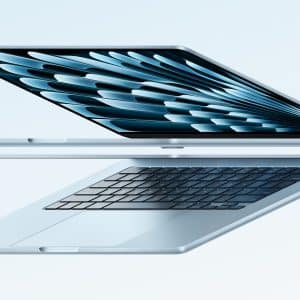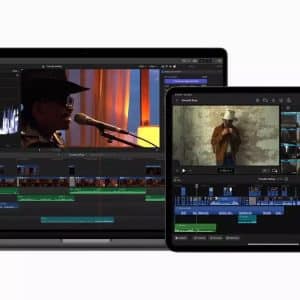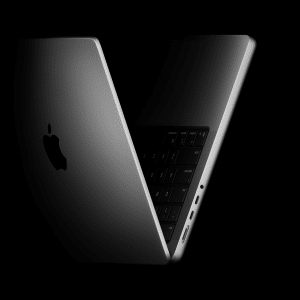Apple’s decision to pull away from Intel is unsurprising yet hugely exciting.
The company has designed custom chips for the iPhone, iPad, and Apple Watch for a number of years, with in-house engineers creating technology that just works. In the past five years, Apple has made some significant gains in processor performance, and today’s iPhones are now as powerful as a standard PC. According to leaked benchmarks and analysis from Ming-Chi Kuo, the upcoming iPhone 12 will be more powerful than a high-end 16-inch MacBook Pro, demonstrating the disparities between smartphone and PC architecture.
Standing out from the crowd
The ultimate aim for Apple is to deliver the best possible performance for its Macs and stand out in today’s crowded PC market. Although Mac shipments grew 5% in Q2 of 2020 due to the coronavirus pandemic, the overall PC market is slowing down, and market leaders Lenovo and HP – which both hold around a 25% share of the market each – are way ahead of Apple, whose share of the market fluctuates around the 6% figure.
Sure, Apple’s PCs and laptops have a higher price tag and more specific use cases, but the company is redoubling its efforts to grow that. The iPhone, for example, has a 13% share of the smartphone market, single-handedly transforming the fortunes of the Cupertino firm.
Improving security
Another reason for Apple to transition to its own chips is to add new custom technologies to give the Mac more capabilities, whether that be integration with other products like AirPods or better security.
Deepening the integration with software and hardware worked for iPhone – and the same should happen with the Mac. Offering best-in-class security, high-performance graphics, and Neural Engines and Machine Learning Accelerators, these new Macs will have more built-in features than ever before, and as most of the work is done on the chip, it won’t need endless storage or CPU to utilize.
Other technologies that Apple has promised to add to the new chip include a high-quality camera processor, as well as an on-chip performance controller, a DRAM, unified memory, and cryptography acceleration, out-of-the-box features that optimize macOS and ensure professionals and everyday users have what they need. That’s on top of other technologies already part of Macs, like T2 chips which integrate the system management controller as well as the SSD controller, Secure Engine, and Touch ID.
Bringing iOS and macOS closer together
What’s perhaps most interesting to note is that Apple’s already using ARM-based technology for its A-series chips in the iPhone and iPad. For years, those chips have been optimized and tweaked for the next-generation of performance, and the latest A12 and A13 chips are amongst the most advanced on the market. The A12X and A12Z chips on the iPad Pro, for example, offer similar performance to a high-end macOS device, and many of the lessons that Apple has learned with the iPhone can be utilized on the Mac, building custom GPUs, memory and storage controllers, encryption, and more, all leading to a seamless transition.
Moving away from Intel
Right now, Apple uses X86 chips from Intel, and because Apple’s custom silicon chip is built on a different architecture, the move towards ARM won’t happen overnight. In fact, Apple offered a two-year roadmap for the transition during its keynote presentation and unusually confirmed the release of more Intel-based Macs coming this year.
That’s led many to ask whether to upgrade their Mac or hold off until the new ARM-based Macs arrive, and the truth is that it’s hard to answer that question just yet.
When Apple moved from PowerPC processors to Intel chips in 2006, the transition was slow and caused release issues. This time, the company wants to simplify the process as far as possible, hence launching the Developer Transition Kit to allow macOS developers to prepare their software in advance.
And work has already begun at Apple – all of its native apps, as well as professional tools such as Final Cut Pro and Logic Pro, are running natively on Apple Silicon, and teams are working with Adobe, Microsoft, and others to update their apps for Silicon. Developers who want to prepare can take advantage of the Xcode beta to get their apps ready for the new platform, and Apple says that the transition should take just a day or two.
That’s thanks to a Universal 2 binary that works on both Intel-based Macs and ARM-based Macs, which should mean that current Mac users won’t need to upgrade their devices immediately to take advantage of new features. The QuickStart Program, allowing developers to create apps for ARM-based Macs, offers the Developer Transition Kit, a Mac mini that features an A12Z chip, 16GB of RAM, and a 512GB SSD, ideal for testing new features and preparing for future ARM Macs.
According to Geekbench benchmarks of the Developer Transition Kit, Apple’s new hardware offers single-core and multi-core scores of 811 and 2,781 respectively, though we should note that Geekbench runs through Apple’s Rosetta 2 transition layer which results in slower performance. However, the chip already outperforms the Surface Pro X, which is promising.
In the years ahead, Apple will continue to offer support for Intel-based Macs, and users who purchase a new ARM-based Macs can run Intel apps on day one, even if those apps haven’t been updated or optimized for Apple Silicon. Windows won’t operate in Boot Camp mode on new Silicon Macs, and Microsoft has said that there are “no current plans” to support Silicon.
Craig Federighi, too, said that Apple won’t support Boot Camp on future Macs, telling developers that “virtualization is the route” for those wanting Windows.
When are ARM Macs coming?
Whilst current Intel-based Macs have recovery options available at boot-up, on Apple Silicon Macs, there’ll be a dedicated Startup Manager Interface, allowing for recovery options like reinstalling macOS, shutting down, restarting, and booting up. Startup Disk will allow users to select different security modes for startup volumes, and reduced security offers users more flexibility, disabling System Integrity Protection to run any version of macOS. Target Disk Mode, on the other hand, will be replaced by Mac Sharing Mode, which turns the new Silicon Mac into an SMB file sharing server, offering enhanced security and easier transfers.
Other noteworthy features include the inclusion of Thunderbolt support. Apple worked with Intel more than a decade ago to work on the tech, and Thunderbolt 3, a USB-C adapter, will be supported out-of-the-box. We don’t know for certain whether Apple will add Thunderbolt connectors to its Macs, or instead encourage users to purchase a Thunderbolt dongle.
Though we don’t have an exact date for the first Silicon Mac, we do know that the company is working on at least three Mac processors, and at least one of those will be much faster than the A-series chips featured in iPhones, perhaps for the iMac Pro and Mac Pro. The firm is also working on second-generation Mac processors which will be based on the A15 chip. Apple confirmed at WWDC that the first Apple Silicon Mac will launch before the end of the year, though transitioning its entire range will take two years, to around June 2022.
According to insider Ming-Chi Kuo, Apple’s first Silicon Mac will be the 13-inch MacBook Pro and MacBook Air, before the firm moves to 14.1 and 16-inch MacBook Pro models with Silicon chips in 2021. iMacs, Mac Pros, and Mac minis will then follow in 2021 and 2022, though this timeline could change. All that we can do until then is follow the progress of the Apple Silicon transition online, and prepare for macOS Big Sur, set for release in September.







